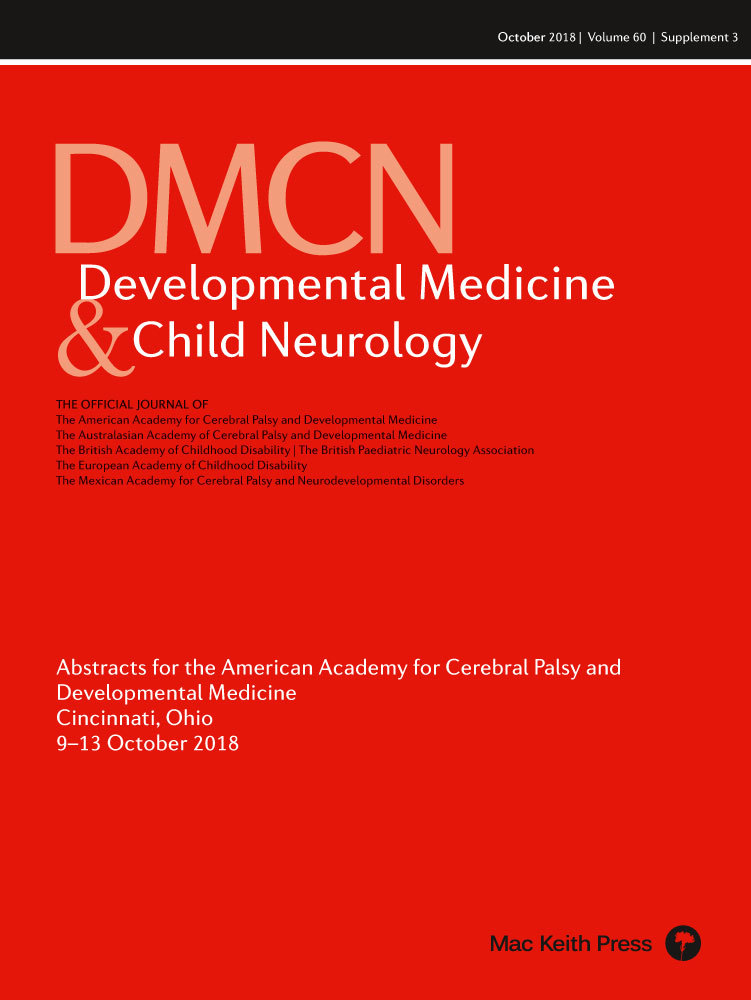Combined transcranial direct current stimulation and robotic upper limb therapy improves upper limb function in adults with cerebral palsy
L3
K Friel1,2, K Zoe Tsagaris1, P Lee3, T Campos1, L Soles4, D Edwards1
1Burke Medical Research Institute, White Plains, NY, USA; 2Blythedale Children's Hospital, Valhalla, NY, USA; 3Albert Einstein College of Medicine, Bronx, NY. USA; 4University of California at Irvine, Irvine, CA, USA
Background and Objective(s): Transcranial direct current stimulation (tDCS) and upper limb robotic therapy are innovative therapies for improving upper limb skill in hemiparesis. Excitatory tDCS can be used to prime brain motor circuits before robotic therapy, which has shown to improve upper limb function in adults with chronic stroke. This pilot study tested the safety and efficacy of combined tDCS and robotic therapy in adults with cerebral palsy (CP). Despite the best existing therapies, most adults with CP still have substantial impairments that can have profound consequences on quality of life and independence. Hypothesis: Combined tDCS and robotic therapy will safely improve upper limb function in adults with CP.
Study Design: Randomized clinical trial.
Study Participants & Setting: Eight adults (mean age 25) with USCP, rehabilitation institute laboratory.
Materials/Methods: Therapy consisted of 36 sessions of tDCS or no tDCS plus robotic therapy. In each session, if the participant was assigned to the tDCS group, excitatory (anodal) tDCS (2 mA, 20 min) was applied over the motor map of the affected hand. Single-pulse transcranial magnetic stimulation (TMS) was used to locate the motor map of the affected hand. Side effects were documented after each session. Immediately after tDCS, the participant completed one hour of robotic therapy, using the shoulder, elbow, and wrist (MIT Manus robots). Participants in both tDCS and no tDCS conditions sat in a padded chair facing the robot and a video screen. The affected arm was abducted, forearm supported, and hand lightly grasping the robot handle. Velcro straps lightly held the arm on the robot arm. Eight targets were arranged symmetrically in a circle (14 cm radius) on a screen facing the participant. During each session, the p articipant controlled the robot arm with his affected arm to move a cursor from the center of the circle to each of the eight targets, for 960 arm movements. The robot captured kinematic measures of all movements. Outcomes were measured before, after, and six months after therapy. To assess motor function, hand function was tested with the Wolf Motor Function Test (WMFT) and Fugl-Meyer (FM). To test neurophysiology, single-pulse TMS was used to map the motor representation of the affected hand.
Results: Reaching accuracy on the robot task improved significantly (p < 0.01) after therapy. The WMFT and FM improved statistically significant (p < 0.01) and clinically meaningful amounts after therapy. The motor map of the affected hand expanded after therapy. Improvements were maintained six months after therapy.
Conclusions/Significance: Combined tDCS and robotic therapy safely improved upper limb function in adults with CP. This innovative therapy should be tested in a greater number of participants.




